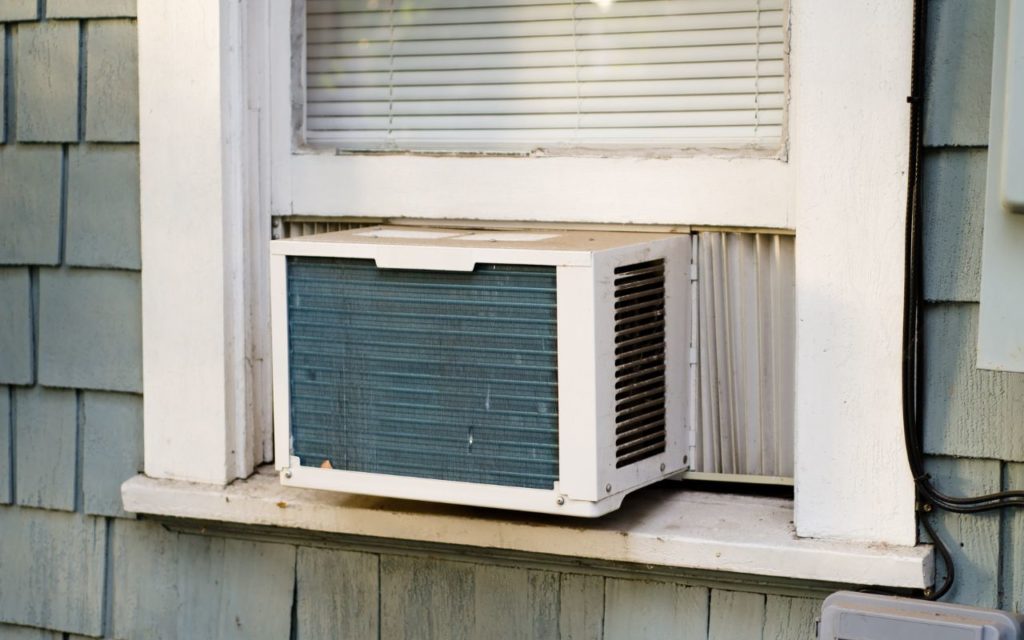
R-22 is a chemical refrigerant, also known as freon, commonly used in older air conditioning units. It’s a fluid that pumps inside the coils of air conditioners, and, with the help of the compressor, condenser and evaporator, transforms between liquid and gas states. When compressed, the freon gas becomes very hot. That hot gas moves through the coils, cooling it down to the point where it becomes a liquid once again. The freon liquid is then transformed into a cool gas which absorbs heat and cools down the air.
R-22, or freon, is one of several types of refrigerants used in air conditioners. It has been used for almost 100 years, but unfortunately, this chemical can do more harm than good. That’s because R-22 refrigerant is a chlorofluorocarbon (CFC). These types of chemicals are known for being ozone-depleting substances. In other words, they destroy the earth’s protective ozone layer.
The ozone layer exists to shield the surface of the earth from dangerous ultraviolet rays that can lead to skin cancer, disrupt marine life, and reduce agricultural productivity. It impacts just about everyone and everything on earth in one way or another. That’s why, as of January 1, 2020, the production and import of R-22 refrigerant is illegal in the United States.
If your home’s air conditioning unit is more than 10 years old, there’s a good chance it uses R-22. To find out for sure, follow these simple steps:
If you have it, consult the owner’s manual that came with your unit when it was installed. The industry often labels R-22 as HCFC-22, so be on the lookout for that notation in the manual.
Check the indoor coil or head outside and look at your AC system’s outdoor condenser. There should be a nameplate on either of those that list all the specs associated with your unit, including the refrigerant it contains.
If you still aren’t sure whether or not the R-22 ban impacts your unit, contact a professional HVAC company. And, if you’re in the Dauphin County area, call WM Buffington. With over 70 years in the business and many older and historic homes in the area, we’ve seen our fair share of air conditioners still running on freon. Our experienced, EPA-certified technicians can come out and inspect your unit to confirm whether or not it contains R-22 and explain your options with regard to servicing and replacement.
With air conditioners that use R-22 refrigerant no longer being manufactured and the fact that freon has been banned, you might be wondering where that leaves you. Here are a few points to consider.
If you have an older model air conditioner that still runs on R-22, you can still keep using it. Continued use of your air conditioner (AC) or heat pump system using R-22 refrigerant is allowed. However, it does mean that if your AC or heat pump system needs a repair that involves refrigerant, you may have to decide between a hefty refrigerant bill and a system replacement.
There are restrictions on how R-22 is handled as it is now treated as hazardous waste. Repair technicians are required to become EPA-certified to work on units containing R-22and they will only be permitted to use recycled or repurposed R-22 refrigerant for maintenance on older units. In other words, if your unit begins to leak, there’s not going to be an easy — or cheap — way to replace what it has lost.
If your old AC unit is nearing the end of its lifespan or is in need of repairs, you might want to consider replacing it with a newer system. The EPA not only banned the manufacturing of R-22, but it also banned the manufacture and installation of new R-22 AC or heat pump systems. As a result, manufacturers of AC and heat pump equipment redesigned their systems to accommodate R410A, a chlorine-free refrigerant.
What does all of this mean for homeowners with freon-containing AC units? It means you’ll no longer be able to replace your AC unit with another similar model and to maintain your current one, it will get increasingly difficult to source parts and refrigerant. In fact, since only recycled or repurposed freon can be used, supply is decreasing, causing prices to steadily increase.
If you have one of the older air conditioning systems that run on R-22, your best option is to just replace it altogether. Not only will you save money in refrigerant costs and replacement parts, but newer air conditioners can also provide greater energy efficiency (which means lower utility bills) all while helping to protect the planet.
Interested in learning more or want to schedule a new air conditioner installation? Contact WM Buffington in Highspire for AC installation and repairs.